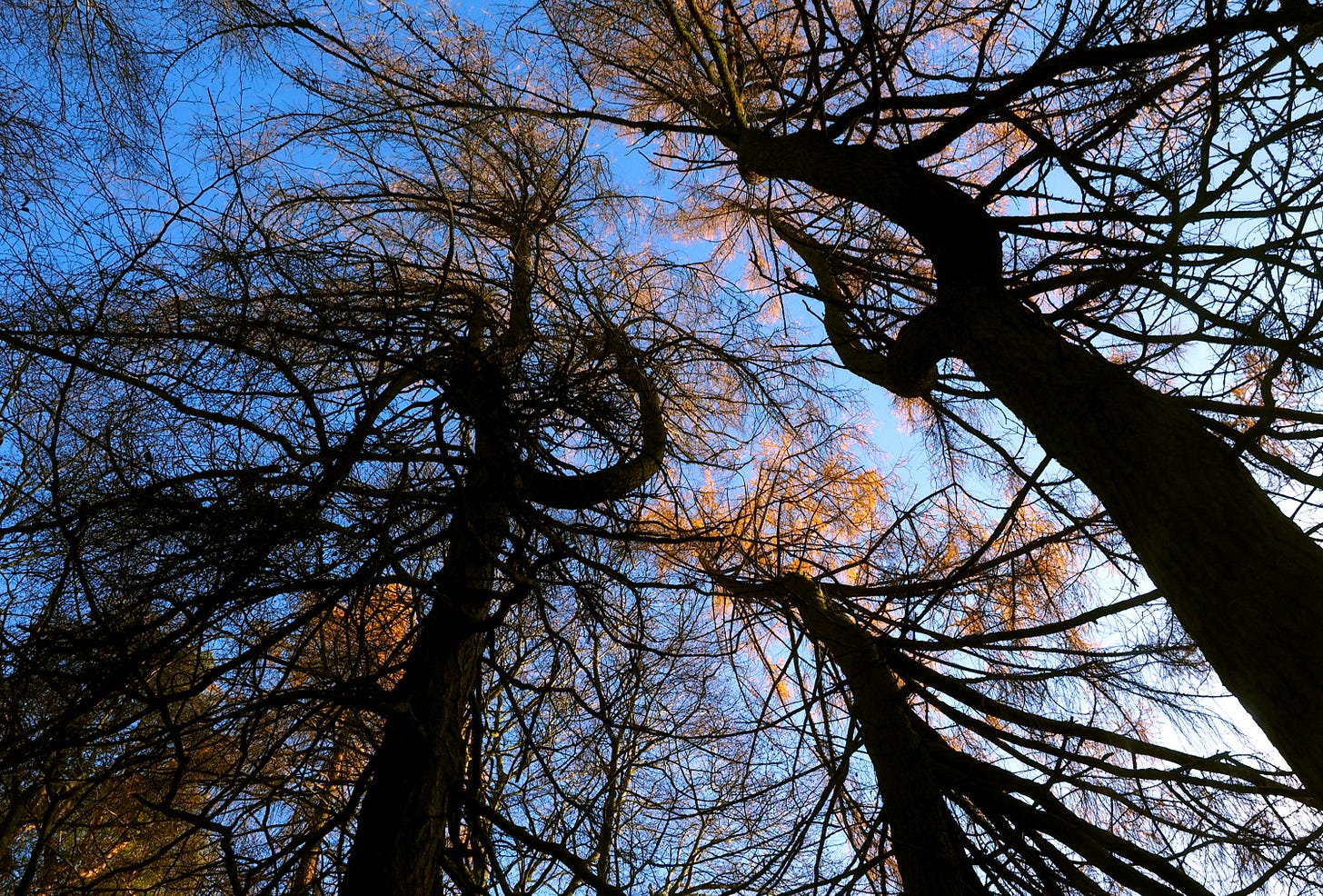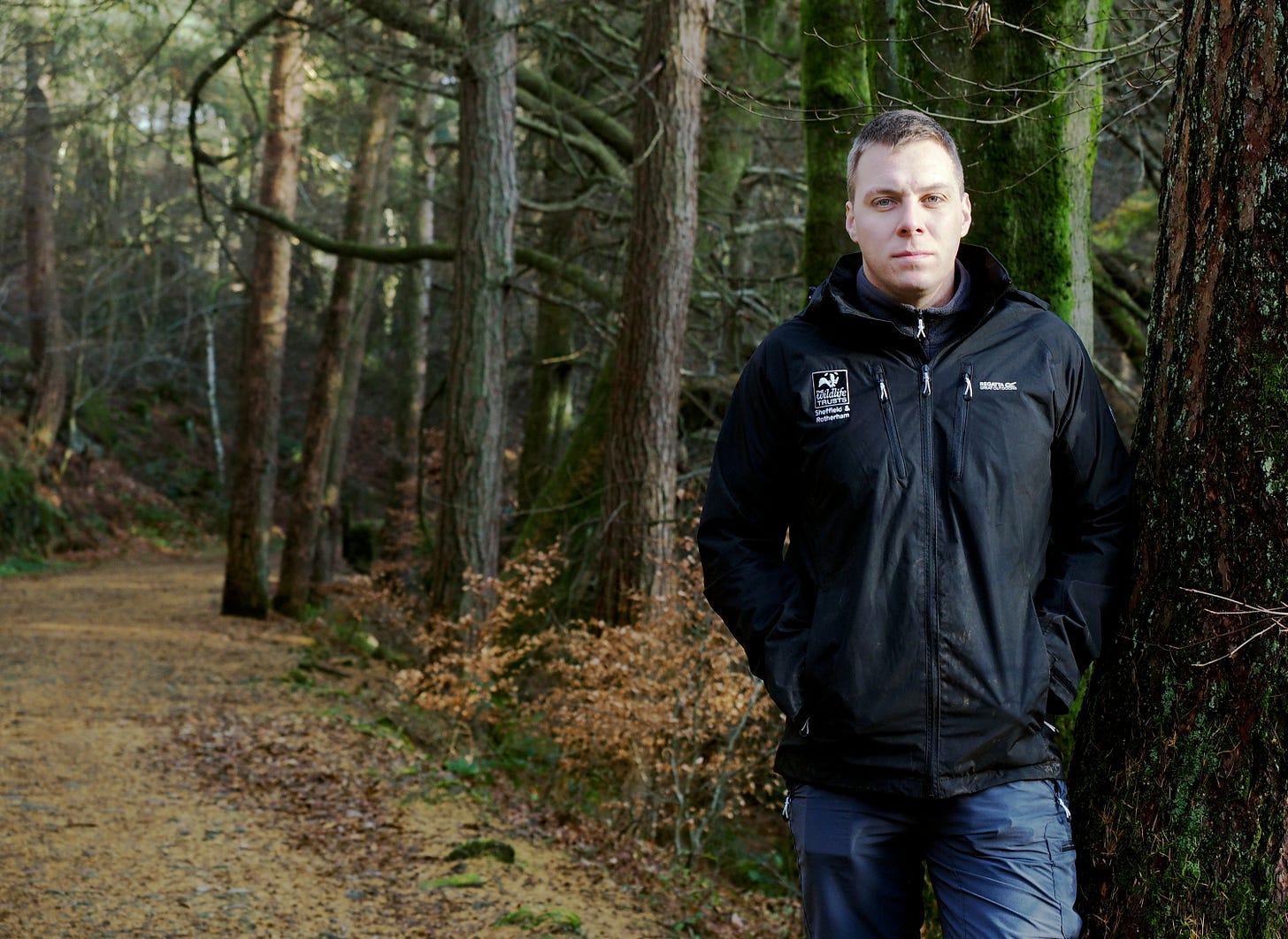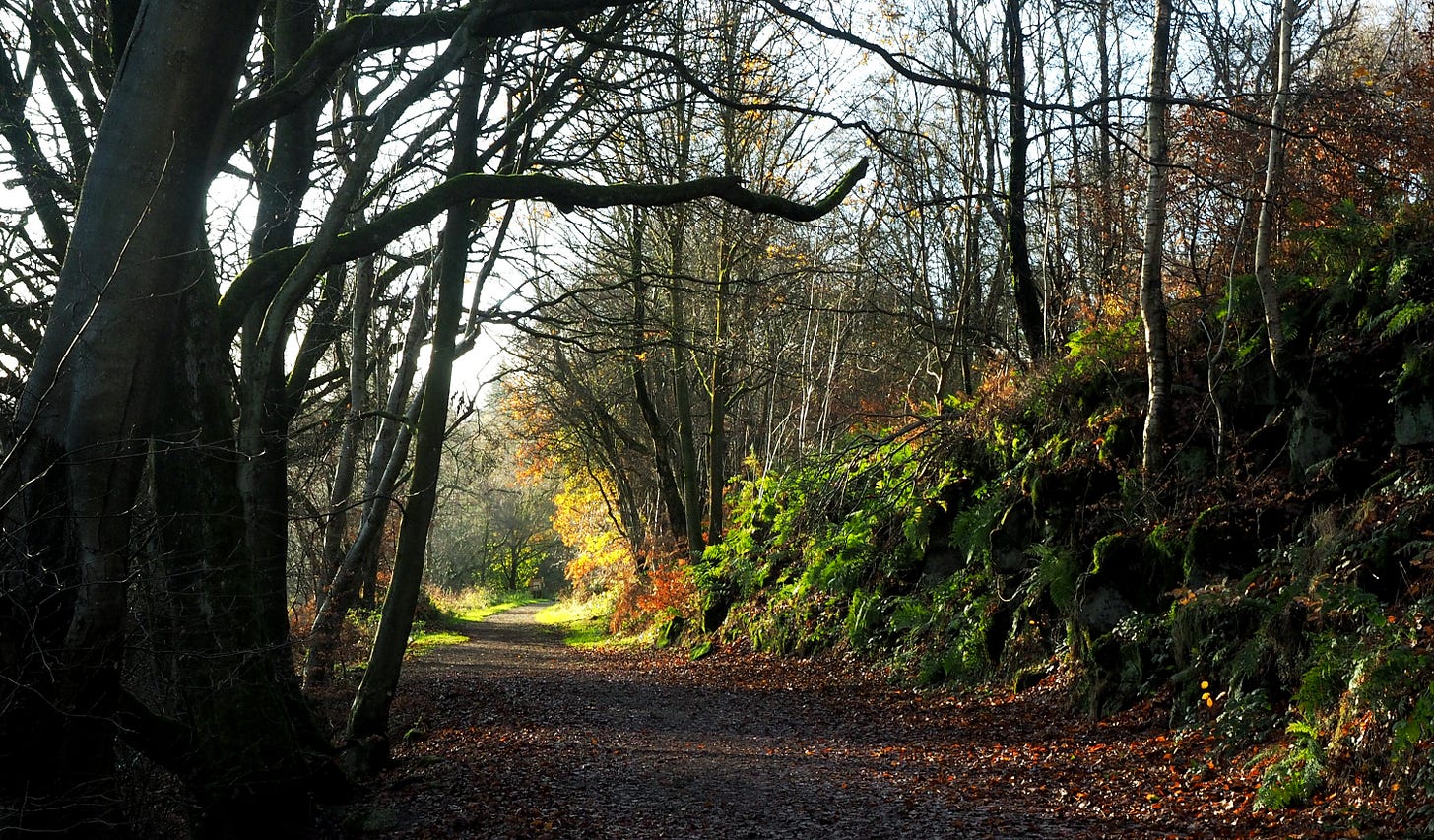This winter is the last time we’ll be able to see the yellow brick road of Wyming Brook, covered by the autumn needles of larch trees.
In the New Year, or maybe before, felling work around the Rivelin Reservoir is likely to begin, after an outbreak of sudden larch death, Phytophthora ramorum, a disease caused by a ‘water mould’ which attacks larch trees.
Any day now, reservoir landowners Yorkshire Water and Wyming Brook managers the Sheffield and Rotherham Wildlife Trust (SRWT) expect to receive a statutory felling notice from the Forestry Commission to remove all the larch trees on site, and quite possibly many sweet chestnuts too, which can also be affected by Phytophthora ramorum.
Although the Trust plan to begin tree felling on their Wyming Brook Nature Reserve next September, the small car park off Redmires Road and the main Wyming Brook Drive down to Rivelin Reservoir will close for a month or more in January or February 2023, for Yorkshire Water to set up their vehicles and equipment to transport the larches out of their plantations south of the reservoir.
“Wyming Brook is going to change, but we are going to manage it to keep it visitable and beautiful,” said James Hargreaves of SRWT, adding that the effects are likely to be ‘drastic’ in the short to medium term.
The steep rocky gorge of Wyming Brook, with tall conifers overhead as you climb the slippery pathway, feels like a scene from Lord of the Rings. Generations have loved climbing Wyming Brook, for the family Christmas outing in particular. “It’s so green! It’s like Rivendell!’ was one comment I heard referring to JRR Tolkein’s home of the elves not so long ago.
The Wyming Brook Drive was built as a recreational family destination under a Sheffield Council employment scheme 110 years ago. It soon became a popular family day out in the car, but is now just for walkers, cyclists and horse riders, who for the next month or so can still make their way down the track, over the golden needles that until this year have fallen every autumn from larch trees now under a government death sentence.
But reserve manager Paul Jarman is feeling more positive about the felling work. The European larch of Wyming Brook, planted little more than a century ago, is not a native species, he points out.
“It was planted as an ornamental tree, and the absence of larch will offer more opportunities for native broad leaf species,” he said. “The larch is interspersed with other species, so the native seed bank is there, it’s all ready to spring up once it has the room and light. There’ll be a diversity of height and density, it’ll be much more varied than the current larch habitat with tall poles of larch with not a great deal going on beneath them.”
Part of the nature reserve is an offical Site of Special Scientific Interest, as a mixed upland broadleaf wood, but the last Natural England survey registered the site as in unfavourable / recovering condition, largely due to the non-native larch and spruce trees growing there. The removal of the larch will improve the nature of the SSSI woodland both officially and practically, said Paul. “It should become a more diverse wood, with more species and more wildife,” he said.
James Hargreaves understands that tree felling is a contentious issue in Sheffield, for rightful reasons, he said. “We know people will be shocked about this, so we want people to understand this is going to happen and the reasons behind it.”
I happened upon Ian Rotherham while at Wyming Brook this week, ecologist, environmental campaigner and former Sheffield Hallam University professor. Phytophthora has been here for a very long time, he observed, so why is the government insisting that all larches are felled rather than allowing resistance to develop to new strains in a particular area?
Is it to do with forestry money, or just simple ill-thought-out bureaucracy to decree that all members of a single species must go when threatened by a disease worsened by a harshening climate?
Phytophthora ramorum is spread in watercourses and by wind blown rain, of which we have plenty in autumnal Sheffield. Once inside the tree, the mould damages the ability of the tree to transfer water around, and can kill the tree fairly quickly, said Paul Jarman. It’s there already in some Wyming Brook larch, and the summer drought may well have accelerated the decline of afflicted trees, but they won’t show signs until next year, he said.
Professor Rotherham is not wrong to question the government’s approach, said Paul. But in the meantime, the official order to fell has to be followed, by law.
When they begin selective felling work next September, the Trust will use hand felling and winching rather than large machines in the gully, and will aim to keep other paths open in the reserve when the Yorkshire Water tree felling closes the drive for a month or so this winter. The delay to work in Wyming Brook also gives his team more time to address archeological and access issues, Paul said.
He sees the change as an opportunity for local wildlife. Native trees including oak, rowan, birch, Scots pine, hazel, alder and willow have co-existed with the larch for years, and new native trees will soon begin to grow, along with bushes like bilberry and holly. Insects and birds will love the new habitat under the trees, and Paul hopes rare species like pied flycatcher will spread up the gorge in the changing environment.
Scrub may not have the golden glow of autumnal larch trees, but it’s very good for wildlife, and would have been a recurring natural landscape thousands of years ago when our woodland was managed by bison and buffalo rather than the Forestry Commission.
“It’ll take some getting used to, but I see this in a positive way,” said Paul. “The emergent scrub is going to be great. The wildlife isn’t going anywhere, and there’ll be more opportunity to increase the diversity of that wildlife.”
But will Wyming Brook still be listed as one of the most spectacular sites of the Peak District? Can emergent scrub still be Rivendell? We’ll see in a few years.
For updates on the Wyming Brook tree work see: https://www.wildsheffield.com/wyming-brook-works/







